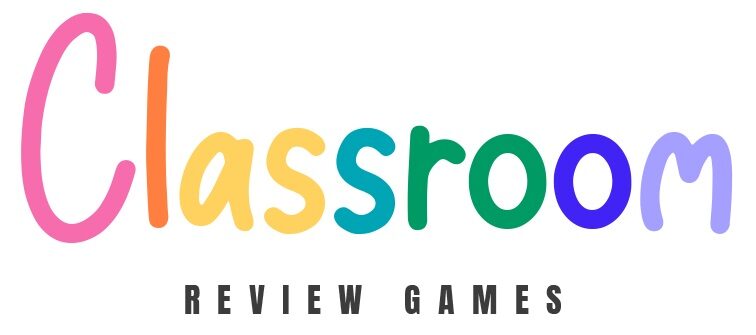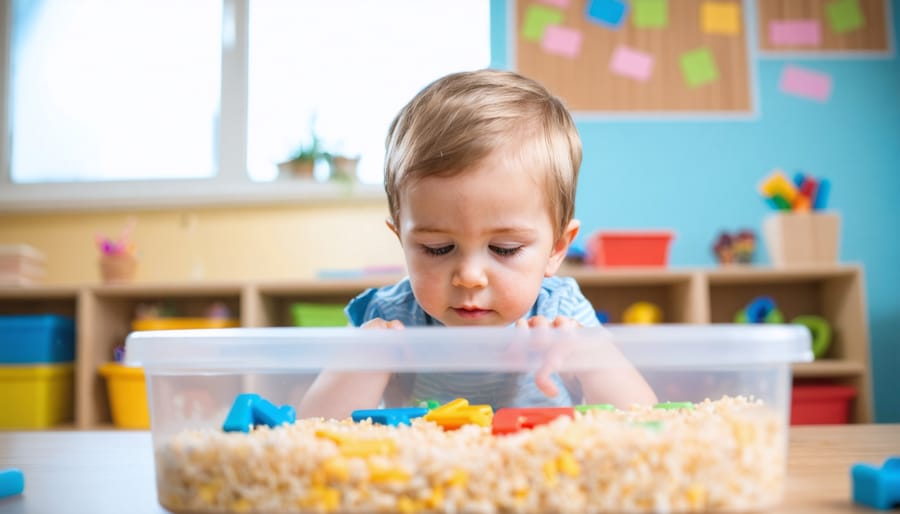Keep Your Young Students Engaged With These Peaceful Classroom Activities
Transform your classroom into a peaceful learning sanctuary with quiet activities that engage young minds while maintaining order. As early childhood educators know, balancing learning through play with classroom management requires strategic activities that captivate without chaos. Whether you’re managing transition times, setting up independent work stations, or creating focused learning moments, quiet activities are essential tools in every preschool teacher’s arsenal.
These carefully selected activities not only keep noise levels down but also develop crucial skills like concentration, fine motor control, and self-regulation. From sensory bins filled with rice and hidden alphabet cards to silent storytelling with picture sequences, each activity serves multiple developmental purposes while preserving the calm atmosphere your classroom needs.
Let’s explore practical, proven quiet-time activities that work specifically for 3-5 year olds, complete with setup tips and classroom management strategies you can implement today.
Individual Learning Centers That Keep the Peace
Sensory Bins and Manipulatives
Sensory bins are a fantastic way to keep little ones quietly engaged while developing fine motor skills and cognitive abilities. Create themed bins using rice, dried beans, or kinetic sand as a base, then add educational elements like magnetic letters, counting bears, or shape sorting pieces. Keep the experience peaceful by establishing clear guidelines about keeping materials in the bin.
Consider rotating different manipulatives weekly to maintain interest: pattern blocks for shape recognition, linking cubes for early math concepts, or threading beads for hand-eye coordination. These materials naturally encourage quiet focus as children explore and learn through touch.
Pro tip: Place sensory bins on anti-slip mats and use shallow, wide containers to minimize spills. Add visual instruction cards showing proper use, and consider having designated “quiet corners” where children can explore these materials independently. For extra engagement, incorporate seasonal items or match current learning themes – like ocean-themed manipulatives during a sea life unit.
Remember to model appropriate quiet play and celebrate when children maintain peaceful exploration. This positive reinforcement helps establish lasting quiet time routines.
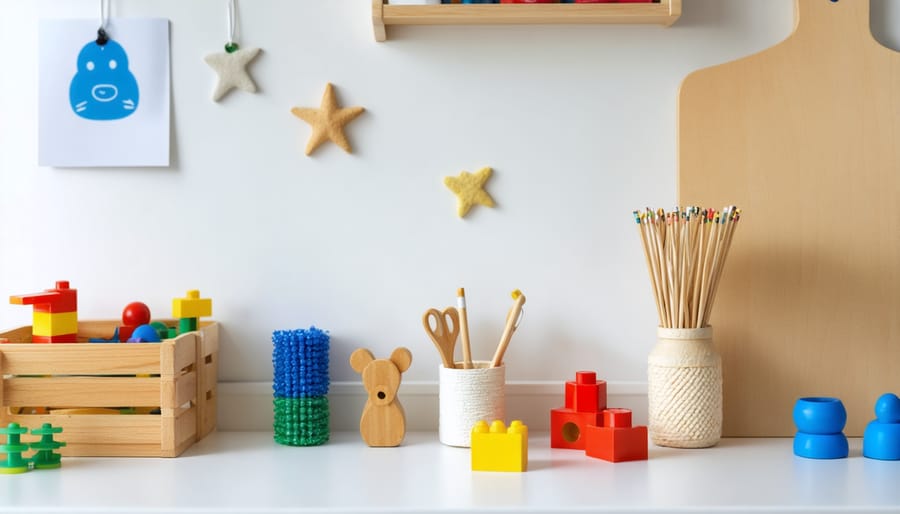
Drawing and Writing Stations
Drawing and writing stations are fantastic quiet-time activities that help develop crucial fine motor skills while keeping little ones peacefully engaged. Set up dedicated areas with child-sized tables and chairs where kids can freely express their creativity. Stock the stations with age-appropriate supplies like chunky crayons, washable markers, and large sheets of paper.
Create themed drawing prompts using picture cards or simple word suggestions like “favorite animal” or “my family” to spark imagination. Include tracing activities with dotted letters and numbers for early writing practice. Playdough and modeling clay can add variety to the station while strengthening hand muscles needed for writing.
Keep materials organized in clear containers at children’s eye level, making it easy for them to select and return items independently. Rotate materials weekly to maintain interest and introduce new creative challenges. Display finished artwork on a dedicated wall space to boost confidence and encourage participation.
Remember to include cleanup routines as part of the activity – teaching responsibility while maintaining classroom order. This quiet station works perfectly during transition times or as a calming activity after more energetic play.
Desk-Based Educational Activities
Pattern Building and Sorting
Pattern building and sorting activities are wonderful quiet classroom activities that engage young minds while keeping noise levels down. Start by creating sorting stations using everyday classroom materials like colored blocks, buttons, or craft supplies. Set up small trays with clear sorting rules – perhaps by color, size, or shape – and let children work independently to organize their items.
For pattern building, use items like linking cubes, wooden beads, or paper shapes. Create simple pattern cards showing basic sequences (red-blue-red-blue or big-small-big-small) that children can copy. This helps develop early math skills while maintaining a peaceful atmosphere. Keep materials in clear, labeled containers that children can easily access and put away.
Make it extra engaging by incorporating seasonal items – like sorting fall leaves by color or creating patterns with holiday shapes. You can also use classroom manipulatives like unifix cubes or pattern blocks on soft felt boards to minimize noise. For added learning value, encourage children to create their own patterns for friends to copy.
Remember to rotate materials regularly to maintain interest and gradually increase difficulty as children master basic patterns. This activity works beautifully during quiet time or as a calm-down station in your classroom routine.
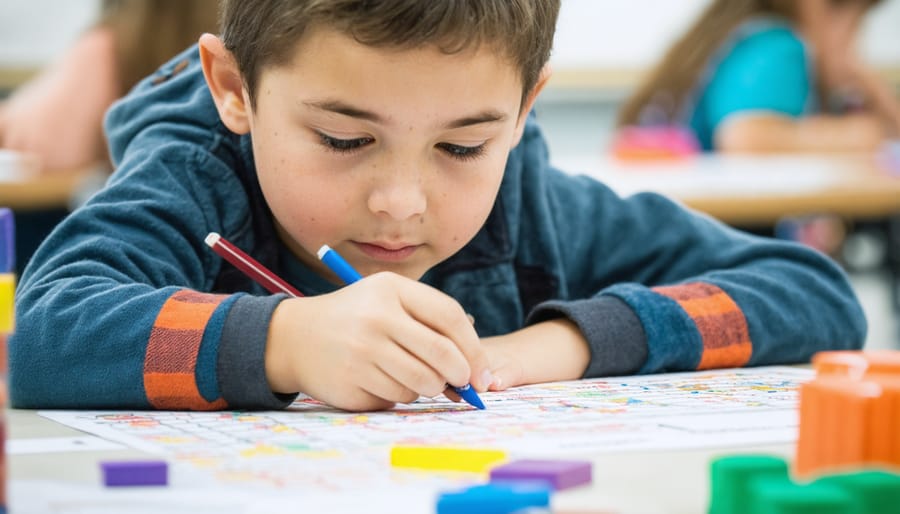
Picture Puzzles and Memory Games
Picture puzzles and memory games are fantastic quiet activities that keep young minds engaged while developing crucial cognitive skills. For 3-5 year olds, start with simple 4-6 piece puzzles and gradually increase complexity as they progress. Large-piece floor puzzles work wonderfully as they allow children to move around while staying focused on the task.
Create DIY memory card sets using matching pictures of animals, shapes, or everyday objects. Laminate these cards for durability and store them in labeled zip-lock bags for easy access. Keep sets small initially (6-8 pairs) and expand as children master the game.
Set up a dedicated puzzle corner in your classroom with comfy cushions and a low table. Rotate puzzles weekly to maintain interest and challenge levels. Consider introducing pattern blocks, shape sorters, and matching games that use everyday classroom items.
For visual memory development, try the “What’s Missing?” game. Arrange 3-4 familiar objects, let children observe them, then remove one while they close their eyes. This simple activity can be played individually or in small groups while maintaining classroom quiet.
Remember to praise effort rather than speed, and encourage problem-solving skills by asking guiding questions like “Which piece might fit here?” or “What color are you looking for?”
Calming Group Activities
Whisper Games and Partner Activities
Partner activities can be just as quiet as solo play when structured thoughtfully! These whisper games are perfect for fostering social skills while maintaining a peaceful classroom atmosphere. Start with the classic “Secret Message” game, where children sit in pairs and take turns whispering simple words or short phrases to each other. This builds listening skills and encourages quiet communication.
Another favorite is “Mirror Partners,” where two children face each other and one leads gentle movements while the other mirrors them – all without speaking! This engaging activity helps develop focus and non-verbal communication skills.
Try “Silent Show and Tell” where partners describe objects using only gestures and facial expressions. It’s one of many effective interactive learning activities that keeps the noise level down while encouraging creativity.
For a calming exercise, introduce “Quiet High Five,” where partners practice giving each other slow-motion high fives without making any sound. This helps develop body control and spatial awareness.
Remember to rotate partners regularly to help children practice these quiet social skills with different classmates. These activities work best when demonstrated first and practiced in small groups before implementing with the whole class.
Silent Signal Activities
Silent signal activities are wonderful tools for teaching young children non-verbal communication while keeping noise levels down. Start with the classic “Follow the Leader” using hand gestures only – children mimic your movements like touching your nose, waving, or making circle motions. This helps develop observation skills and motor coordination.
Another engaging activity is “Animal Actions,” where kids act out different creatures without making sounds. Show picture cards of animals and let children express themselves through movement alone. This encourages creativity and body awareness while maintaining quiet.
The “Magic Mirror” game pairs children up to face each other, taking turns being the leader and follower with gentle movements. It’s perfect for developing focus and spatial awareness without verbal communication.
Try “Weather Movements,” where children respond to picture cards showing different weather types through silent actions – swaying like trees in the wind or tip-toeing like falling rain. This combines science concepts with quiet movement.
Keep a special “quiet signal” consistent throughout these activities, like holding up a peace sign or gently raising your hand. This helps transition between activities while maintaining the calm atmosphere you’ve created.
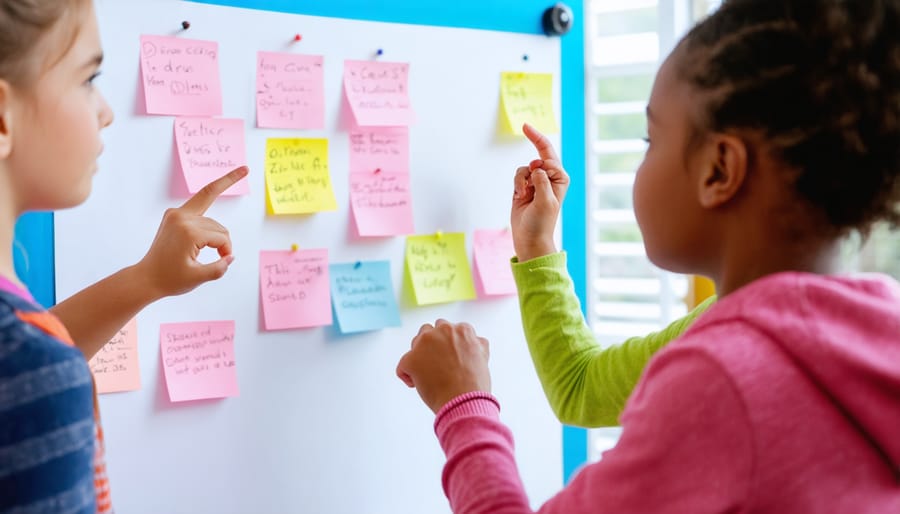
Implementation Tips for Success
Setting up successful quiet activities starts with creating a dedicated calm corner in your classroom. Use soft cushions, low lighting, and perhaps a small tent or canopy to make the space inviting. Keep materials organized in clear, labeled bins at child height so little ones can access them independently.
Timing is crucial – introduce quiet activities during natural transition periods or after high-energy activities when children need to wind down. Start with short 5-10 minute sessions and gradually extend the duration as children build their focus.
Create simple visual cards showing different quiet activities, allowing children to make choices while maintaining a peaceful atmosphere. Rotate activities weekly to keep engagement high, but always keep familiar favorites available for comfort.
Remember to model quiet behavior yourself. Use a soft voice and calm movements when demonstrating activities. Consider using visual timers to help children understand activity duration without verbal reminders.
For group management, introduce a “quiet signal” like a soft bell or gentle music to indicate quiet time. Keep groups small – typically 2-3 children per area works best. Have backup activities ready for children who finish early or need a change.
Most importantly, praise children specifically for their quiet focus: “I notice how carefully you’re working with those puzzle pieces” or “You’re doing such peaceful coloring.” This positive reinforcement helps establish quiet time as an enjoyable part of the daily routine.
Incorporating quiet activities into your daily classroom routine brings countless benefits for both you and your little learners. These peaceful moments help develop concentration, self-regulation, and independent learning skills while giving you valuable opportunities to observe and assess each child’s progress. Remember, successful implementation comes from starting small, being consistent, and gradually building up the duration of quiet time. Mix and match these activities based on your classroom’s unique needs and energy levels. When children learn to engage in quiet activities effectively, they develop essential life skills that will serve them well throughout their educational journey. So take that first step today – your classroom will thank you for these peaceful, productive moments of learning and growth.
